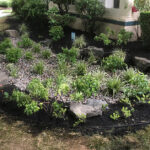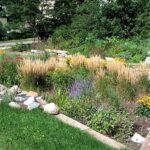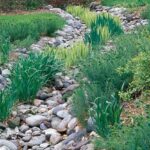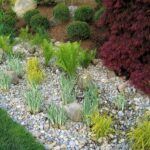Rain gardens are a sustainable landscaping feature that helps manage stormwater runoff in urban areas. These gardens are designed to capture and absorb rainwater, preventing it from flowing into storm drains, which can lead to water pollution and flooding. In addition to being functional, rain gardens can also add beauty to a landscape, creating a peaceful and serene environment.
When designing a rain garden, it is important to consider several factors, including the size and shape of the garden, the types of plants to be used, and the location of the garden in relation to the source of runoff. The size of the garden should be determined based on the amount of runoff it will need to manage, with larger gardens able to handle more water. The shape of the garden should be sloped to encourage water to flow towards the center, where it can be absorbed by the plants and soil.
Choosing the right plants for a rain garden is essential for its success. Native plants are often recommended for rain gardens because they are well adapted to local conditions and require less maintenance. In addition, native plants typically have deep root systems that help to absorb and filter water. Grasses, sedges, and wildflowers are popular choices for rain gardens, as they can thrive in wet conditions and add beauty to the landscape.
Location is also a key factor in rain garden design. Rain gardens should be located in areas where they can intercept runoff from roofs, driveways, and other hard surfaces. This not only helps to manage stormwater but also reduces the amount of pollutants that enter waterways. Additionally, rain gardens should be placed at least 10 feet away from buildings to prevent water from seeping into foundations.
Maintenance is an important aspect of rain garden design, as regular upkeep is necessary to ensure the garden remains functional and attractive. This may include removing debris, weeding, and pruning plants as needed. It is also important to check the garden periodically for signs of erosion or pooling water, as this could indicate a need for adjustments to the design.
In conclusion, rain gardens are an effective and environmentally-friendly way to manage stormwater runoff in urban areas. By carefully considering factors such as garden size, plant selection, location, and maintenance, homeowners and landscapers can create a beautiful and functional rain garden that helps to protect water quality and prevent flooding.










